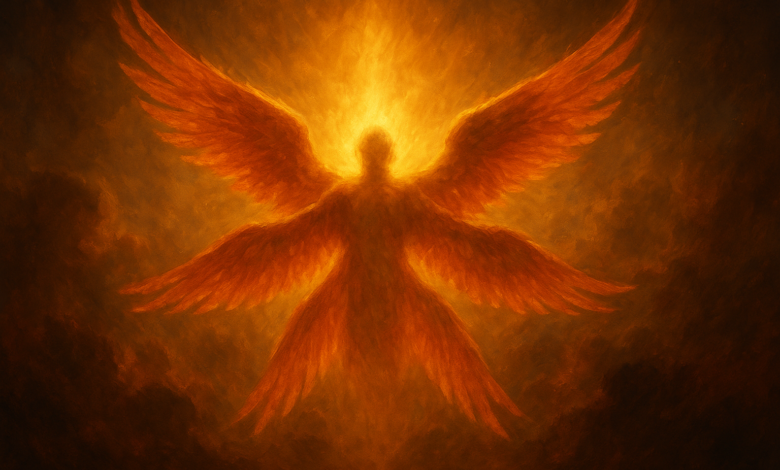Seraphim: Meaning, Origins, Symbolism, and Role in the Angelic Hierarchy

Curious about the seraphim—the “burning ones” with six wings who stand nearest to the divine? This guide brings together history, scripture, theology, and iconography to give you a complete, plain‑English understanding designed to answer every major searcher question about seraphim.
Quick Takeaways
- What they are: Heavenly beings portrayed with six wings who proclaim the divine holiness; they appear prominently in the prophet Isaiah’s vision.
- Why “burning”: The Hebrew root behind seraph carries the sense of “to burn,” and in other passages it also describes “fiery” serpents.
- Place in hierarchy: In classic Christian angelology (e.g., Pseudo‑Dionysius), seraphim rank at the very top of the nine choirs.
What Are Seraphim?
Seraphim are described as exalted, fiery attendants at the throne—beings with six wings who respond to the presence of God with unending praise and complete reverence. Their name evokes burning intensity: zeal, purity, and transformative holiness. In the biblical account, they cover face and feet with four wings (a posture of awe and modesty) and use two wings to fly in service.
Etymology & Textual Origins
The word behind seraphim comes from the Hebrew saraph, a root tied to burning. In some passages of the Hebrew Bible, saraph refers to fiery serpents—a vivid image that likely points to either a burning sting or a blazing appearance. In Isaiah, however, seraphim clearly denotes heavenly beings surrounding the throne. The term thus carries two related strands: the searing purity of flame and a dazzling, fearsome presence.
Seraphim in Isaiah’s Vision
In Isaiah’s famous temple vision, seraphim stand above the throne, each with six wings. They cry out a thrice‑holy acclamation (often known as the Trisagion) affirming God’s holiness and filling the scene with awe. One seraph purifies the prophet’s lips with a live coal from the altar, symbolizing cleansing and readiness to speak. This passage shapes nearly everything later traditions say about these beings—their form, their posture, and their mission of praise and purification.
Seraphim in the Angelic Hierarchy
Later Christian writers organize heavenly beings into a nine‑fold hierarchy, with the seraphim at the summit. In this view, they are those closest to the divine presence, characterized by blazing love and superlative devotion, from which illumination and sanctifying influence “cascade” down to the lower orders. Whether you treat this as doctrine or historical theology, the tradition helps explain why art and liturgy place seraphim nearest the throne.
Iconography: Why Six Wings?
Artists and theologians have long used the six wings to teach spiritual posture: two to veil the face (humility before glory), two to cover the feet (modesty and consecration), and two for flight (swift obedience). Colors trend toward fiery reds and golds to echo the “burning” name and purifying action. While artistic styles vary—from Eastern iconography to Western Renaissance canvases—the core signals of awe, purity, and service remain consistent.
Seraphim vs. Cherubim (and Thrones): A Simple Comparison
| Heavenly Order | Traditional Rank | Typical Depiction | Primary Emphasis |
|---|---|---|---|
| Seraphim | Highest choir | Six wings; posture of veiling and flight | Burning love, holiness, praise, purification |
| Cherubim | Second choir | Multi‑winged guardians (varies by era and style) | Guarding sacred space; knowledge and insight (traditional) |
| Thrones | Third choir | Majestic, often wheel‑like symbolism in some traditions | Divine justice and stability (traditional) |
Note: The ranking above reflects the classic nine‑choir schema in later Christian angelology, not the ordering of biblical books themselves.
Meaning for Readers Today
- Purity and transformation: The coal to Isaiah’s lips pictures cleansing that enables a new commission.
- Reverence: Veiled faces and feet model humility even for the highest heavenly beings.
- Whole‑being devotion: “Burning” love is not sentiment—it’s total orientation toward the good.
Common Questions
Are seraphim “angels”?
In the Hebrew Bible, Isaiah describes seraphim as heavenly beings attending the throne. Later Christian angelology places them among the orders of angels—indeed, at the very top of the nine choirs—so you’ll often see them called angels in that traditional framework.
Why are they called “burning ones”?
The root behind seraph means “to burn.” In several passages outside Isaiah it labels “fiery” serpents; Isaiah uniquely applies the plural term to throne‑room beings, which is why later readers associate “burning” with their ardent love and purifying ministry.
How many seraphim are there?
The text does not specify a number—only that there are multiple seraphim in the vision. Art and literature differ widely on counts; the emphasis is on their role and cry rather than a census.
What do the six wings signify?
They signal humility (veiling), consecration, and ready service (flight). The six‑wing pattern is part of what makes seraphim visually distinctive in art and theology.
Glossary
- Seraph / Seraphim: Singular/plural terms; seraphim is the normal biblical plural.
- Trisagion: “Holy, holy, holy”—the thrice‑holy acclamation in Isaiah’s scene.
- Purification: The symbolic cleansing with a live coal that prepares the prophet to speak.
- Nine Choirs: Later theological ordering of heavenly beings with seraphim at the apex.
Conclusion
Seraphim embody blazing love, unswerving reverence, and purifying nearness to the divine. From Isaiah’s vision to centuries of theology and art, their six wings and fiery name have stood as a shorthand for holiness that transforms. If you remember one thing, remember this: in the great chorus of heaven, the seraphim are the ones who never stop proclaiming holiness—and calling us to live in its light.





